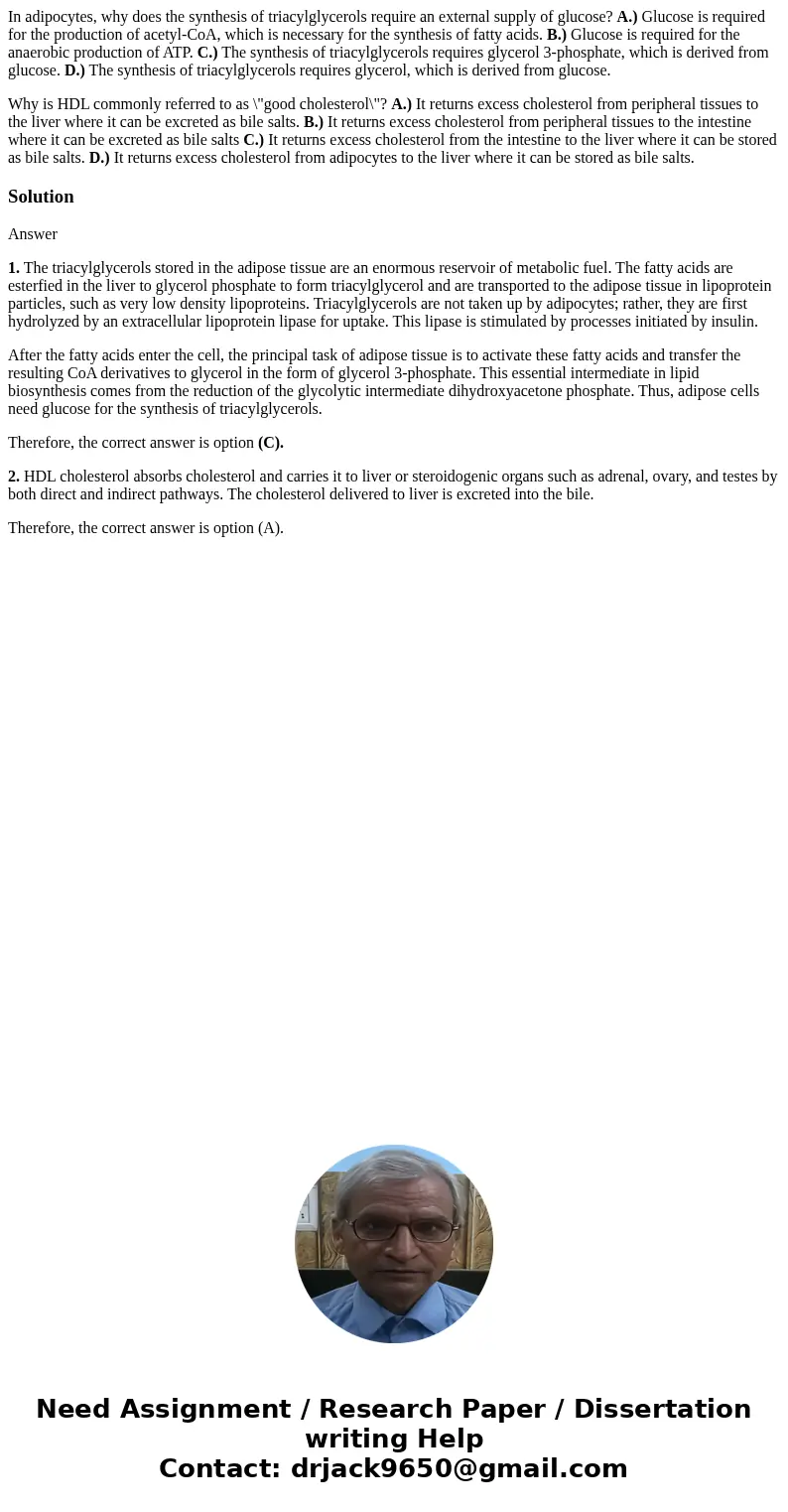In adipocytes why does the synthesis of triacylglycerols req
In adipocytes, why does the synthesis of triacylglycerols require an external supply of glucose? A.) Glucose is required for the production of acetyl-CoA, which is necessary for the synthesis of fatty acids. B.) Glucose is required for the anaerobic production of ATP. C.) The synthesis of triacylglycerols requires glycerol 3-phosphate, which is derived from glucose. D.) The synthesis of triacylglycerols requires glycerol, which is derived from glucose.
Why is HDL commonly referred to as \"good cholesterol\"? A.) It returns excess cholesterol from peripheral tissues to the liver where it can be excreted as bile salts. B.) It returns excess cholesterol from peripheral tissues to the intestine where it can be excreted as bile salts C.) It returns excess cholesterol from the intestine to the liver where it can be stored as bile salts. D.) It returns excess cholesterol from adipocytes to the liver where it can be stored as bile salts.
Solution
Answer
1. The triacylglycerols stored in the adipose tissue are an enormous reservoir of metabolic fuel. The fatty acids are esterfied in the liver to glycerol phosphate to form triacylglycerol and are transported to the adipose tissue in lipoprotein particles, such as very low density lipoproteins. Triacylglycerols are not taken up by adipocytes; rather, they are first hydrolyzed by an extracellular lipoprotein lipase for uptake. This lipase is stimulated by processes initiated by insulin.
After the fatty acids enter the cell, the principal task of adipose tissue is to activate these fatty acids and transfer the resulting CoA derivatives to glycerol in the form of glycerol 3-phosphate. This essential intermediate in lipid biosynthesis comes from the reduction of the glycolytic intermediate dihydroxyacetone phosphate. Thus, adipose cells need glucose for the synthesis of triacylglycerols.
Therefore, the correct answer is option (C).
2. HDL cholesterol absorbs cholesterol and carries it to liver or steroidogenic organs such as adrenal, ovary, and testes by both direct and indirect pathways. The cholesterol delivered to liver is excreted into the bile.
Therefore, the correct answer is option (A).

 Homework Sourse
Homework Sourse